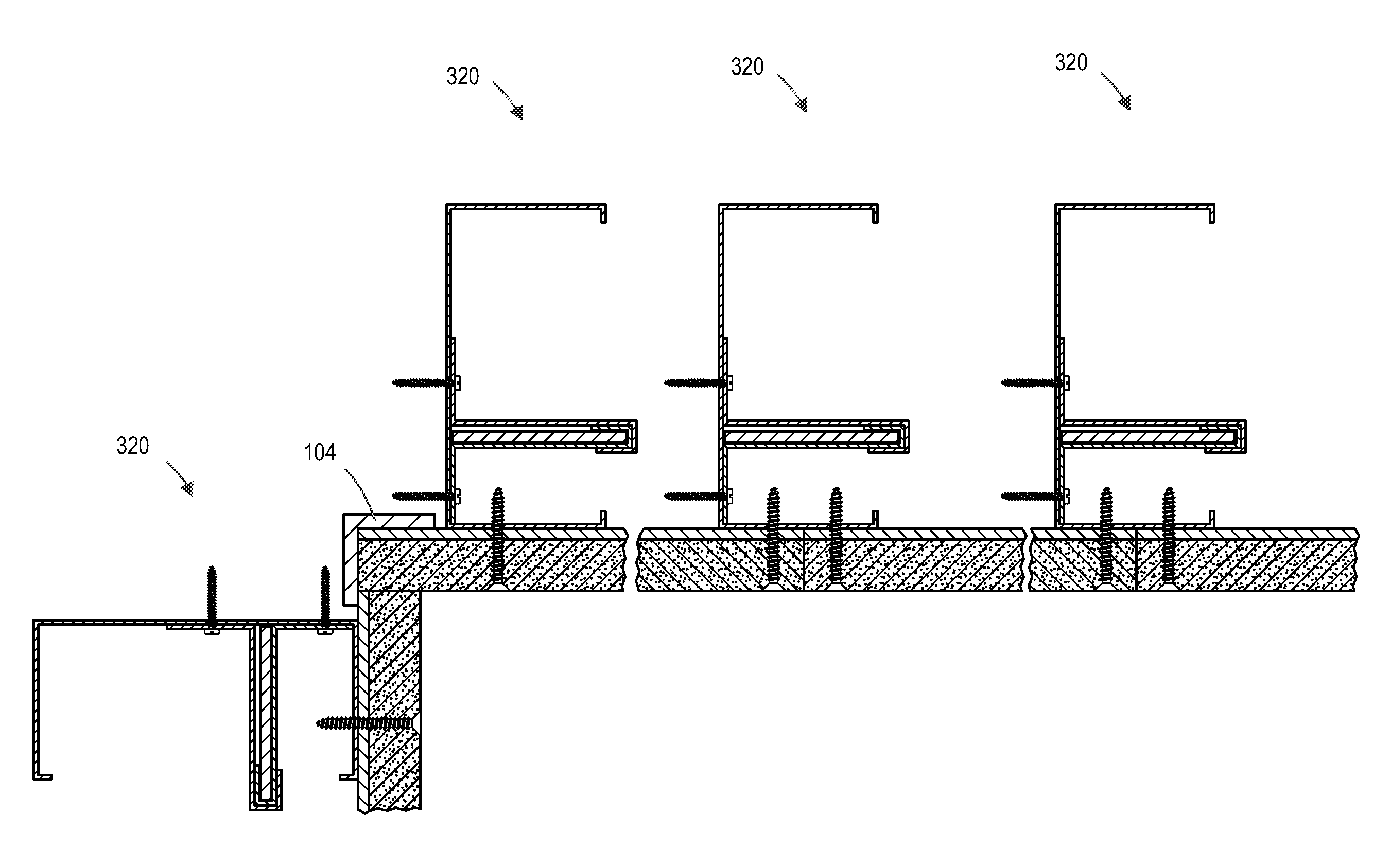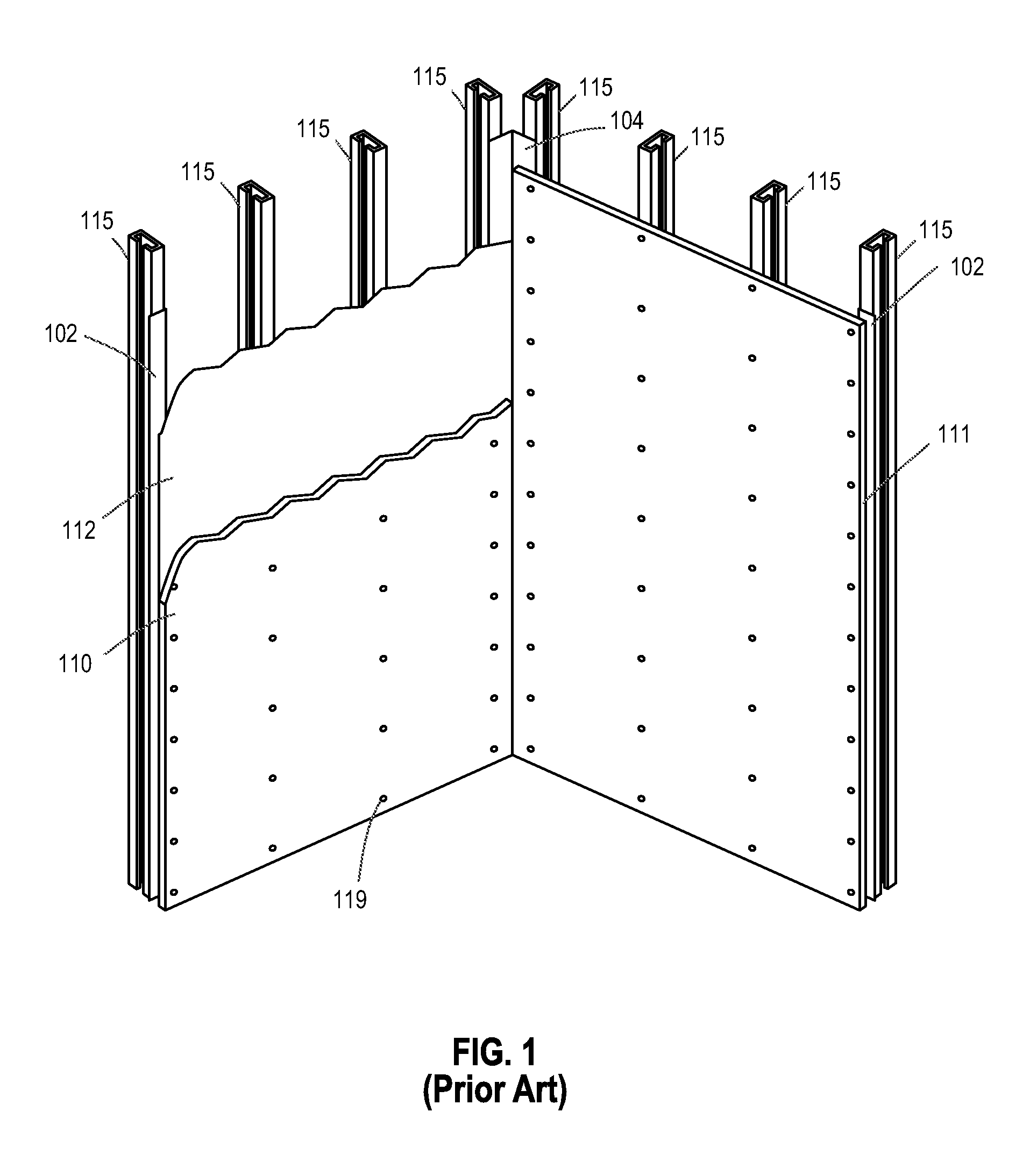Lead-based protective shielding system
- Summary
- Abstract
- Description
- Claims
- Application Information
AI Technical Summary
Benefits of technology
Problems solved by technology
Method used
Image
Examples
Embodiment Construction
[0018]Referring to FIG. 1, a prior art installation of a lead-based protective shielding system to framed walls is illustrated. As shown, each wall section is constructed with a lead-lined gypsum wallboard (drywall) 111. The lead-lined gypsum wallboard 111 includes gypsum wallboard 110 glued on the back side to a lead sheet 112. The gypsum wall board 111 can be 48 inches in width and from eight to twelve feet in height, for example. It is recommended that the lead-lined gypsum wallboard 111 be fastened at a minimum of 8″ on center at the edges of each sheet, and at a minimum of 12″ on center at the intermediate studs with drywall screws. To avoid radiation leakage, additional measures are taken. For example, thin (e.g., 2″ in width) batten lead strips 102 can be installed over each of the vertical wall joints and lead corner ribbons 104 are installed at the corners. Additionally, the installer must countersink drywall screws 118 into the lead-laminated gypsum board 111 (as illustrat...
PUM
 Login to View More
Login to View More Abstract
Description
Claims
Application Information
 Login to View More
Login to View More - R&D Engineer
- R&D Manager
- IP Professional
- Industry Leading Data Capabilities
- Powerful AI technology
- Patent DNA Extraction
Browse by: Latest US Patents, China's latest patents, Technical Efficacy Thesaurus, Application Domain, Technology Topic, Popular Technical Reports.
© 2024 PatSnap. All rights reserved.Legal|Privacy policy|Modern Slavery Act Transparency Statement|Sitemap|About US| Contact US: help@patsnap.com










